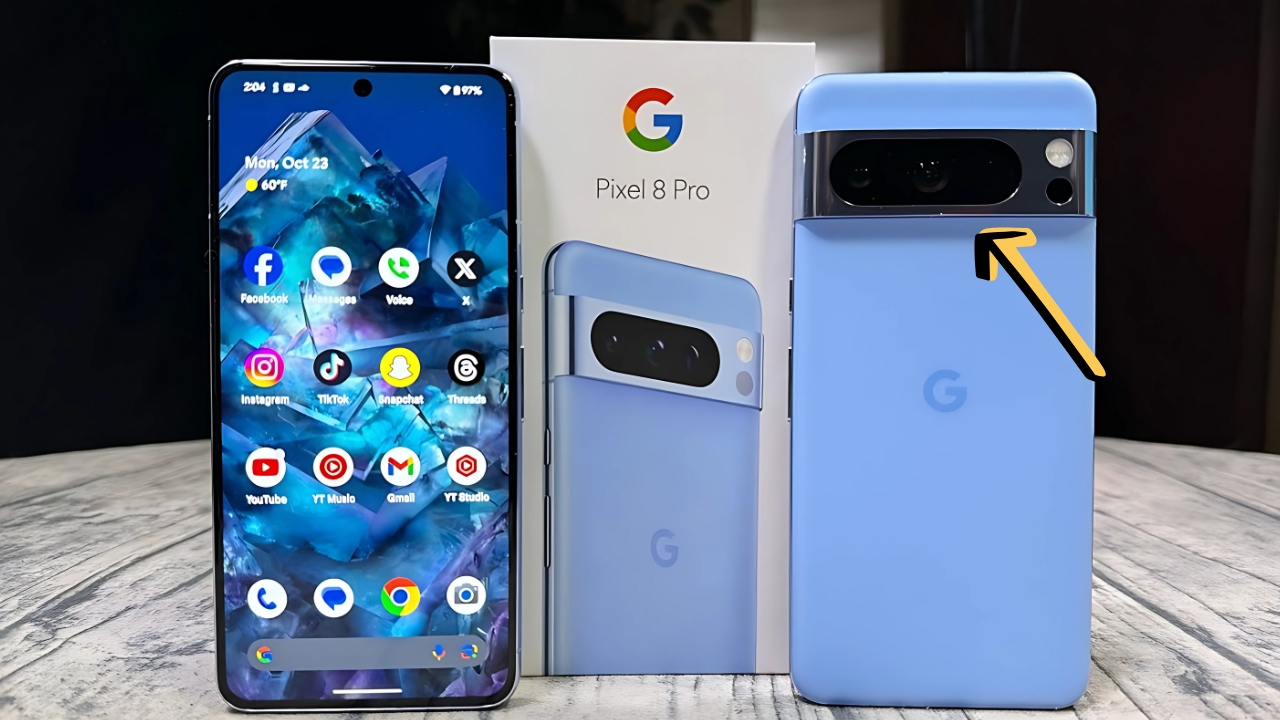Google Pixel 9a Camera: Remember when taking great photos meant spending over $1,000 on a smartphone? Those days are quickly becoming history, and the Google Pixel 9a is leading that charge. After spending weeks testing this $499 device, I’m convinced it’s rewriting the rules about what we should expect from affordable phone cameras.
What Makes This Camera Setup Special
The Pixel 9a comes with a dual-camera system that might seem simple on paper, but don’t let that fool you. You’re getting a 48-megapixel main camera with an f/1.7 aperture paired with a 13-megapixel ultrawide lens. While Google actually reduced the megapixel count from the previous 64-megapixel sensor found in the Pixel 8a, this isn’t the downgrade you might think it is.
The magic happens in Google’s computational photography – essentially, the software that processes your photos after you hit the shutter button. This is where years of Google’s AI development really shine through, turning what could be ordinary hardware into something that consistently produces stunning results.
Real-World Photography Performance
Walking around with the Pixel 9a feels different from using other budget phones. The camera responds quickly, focuses accurately, and most importantly, captures scenes the way your eyes actually see them. During testing in various lighting conditions – from bright sunny days to dimly lit restaurants – the camera maintained impressive consistency.
One of the standout improvements is color accuracy. Previous Pixel phones sometimes made photos look overly vibrant or “punchy,” which could make your morning coffee look unnaturally orange or your green lawn appear almost neon. The Pixel 9a strikes a much better balance, delivering colors that feel natural while still being engaging enough to make your photos pop on social media.
The dynamic range performance deserves special mention. When you’re shooting a scene with both bright sky and shadowy foreground – think standing in a doorway looking out at a sunny street – the Pixel 9a does an excellent job preserving detail in both the highlights and shadows. This means fewer blown-out skies and fewer completely black shadows in your vacation photos.
Portrait Mode and People Photography
Taking photos of friends and family is where this camera really demonstrates its value. The portrait mode works remarkably well, creating that professional-looking background blur (called bokeh) that makes your subject stand out. What’s particularly impressive is how accurately it detects the edges of people, including tricky areas like hair and glasses.
The front-facing 13-megapixel selfie camera produces results with good contrast and saturation. While it might not have the most cutting-edge hardware, the computational photography processing ensures your selfies look natural with proper skin tones and good detail.
Low-Light Photography: A Budget Phone Standout
This is traditionally where budget phones struggle, but the Pixel 9a continues Google’s reputation for excellent low-light performance. Whether you’re capturing dinner at a dimly lit restaurant or taking photos during golden hour, the camera manages to pull impressive detail from challenging lighting situations.
The larger main sensor (compared to many competitors) combined with that f/1.7 aperture allows more light to reach the sensor. Google’s Night Sight mode, which has been refined over several generations, can turn seemingly impossible low-light scenes into usable, often beautiful photographs.
The New Macro Photography Feature
For the first time in Google’s A-series lineup, you get dedicated macro photography capabilities. This isn’t achieved through a separate macro lens (which are often disappointing on budget phones), but rather through the main camera system. The results are surprisingly good, letting you capture close-up details of flowers, food, or small objects with impressive clarity.
When you get close enough to a subject, a flower icon appears on screen, indicating that macro mode is available. The transition is seamless, and the results shoshow much better detail than what you’d typically expect from phones in this price range.
Video Recording Capabilities
The main camera can record 4K video at up to 60 frames per second, which puts it on par with much more expensive devices. The stabilization works well for handheld recording, though you’ll want to be mindful of your technique for the smoothest results.
During testing, the camera handled challenging video scenarios well, like panning across buildings with varying light conditions. The wide dynamic range that makes photos look good also benefits video recording, preventing overexposed or underexposed sections when lighting changes mid-recording.
How It Compares to Premium Phones
While the Pixel 9a can’t match every capability of phones costing twice as much, it gets remarkably close in many scenarios. The main limitations become apparent when you need significant zoom capabilities or are shooting in extremely challenging conditions where larger sensors and dedicated telephoto lenses show their advantages.
The digital zoom goes up to 8x, and while 2x zoom produces perfectly usable results, anything beyond that shows the limitations of not having a dedicated telephoto lens. For most people’s day-to-day photography needs, though, this trade-off is easily acceptable given the price difference.
The Bottom Line for Real Users
What makes the Pixel 9a camera system special isn’t just the hardware – it’s how all the pieces work together to consistently deliver photos that look great without requiring photography expertise. You don’t need to understand technical terms or fiddle with manual settings. Point, shoot, and trust that you’ll get results worth sharing.
For parents wanting to capture their kids’ activities, travelers documenting their adventures, or anyone who wants their everyday moments to look their best, this camera delivers premium-quality results at a fraction of the typical cost. The combination of reliable performance, excellent computational photography, and natural color reproduction makes it a standout choice in the competitive budget smartphone market.
The Google Pixel 9a proves that great photography doesn’t require breaking the bank – sometimes it just requires smart engineering and software that knows how to make the most of good hardware.
